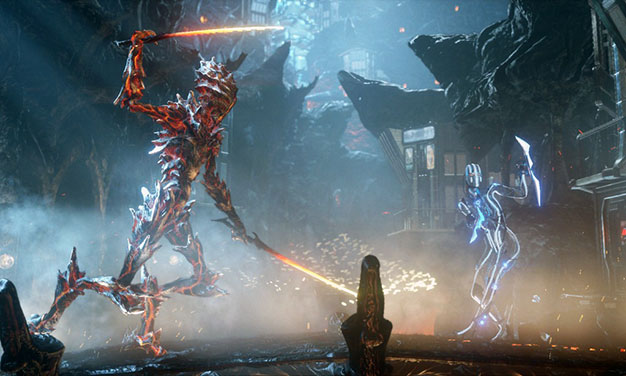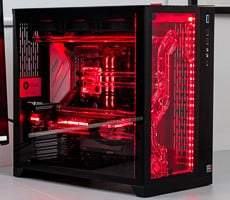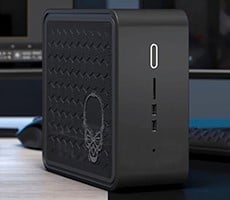Next we'll turn to gaming and graphics benchmarks, diving in with the ever-popular 3DMark suite. Futuremark’s graphically intense 3DMark Fire Strike is designed specifically for gaming PCs. It has both Normal and Extreme modes: Normal runs at 1920x1080, while Extreme runs at 2560x1440 and is intended for high end gaming PCs and multi-GPU configurations.
 |
| Futuremark 3DMark Fire Strike |
| Simulated Gaming Performance |
|
The benchmark uses tessellation, ambient occlusion, volume illumination, and a high quality depth of field filter. We tested the Dell Alienware Area-51 Threadripper Edition on the Extreme preset.
If you're looking for the ultimate gaming benchmark match-up for Ryzen Threadripper (at least as far as synthetic benchmarks go), look no further than
the Origin PC Chronos numbers here with a speedy, overclocked Core i7-7700K under its hood and also a GeForce GTX 1080 Ti, like our Area-51 Threadripper test rig. Here the Area-51 just squeaks out a victory in the overall benchmark scores, but slides in just behind in the FPS results. Either way, it's nip-and-tuck in 3DMark Fire Strike Extreme.
|

|
Unigine Heaven and Valley
|
| DirecX11 Gaming Performance |
|
Unigine's Heaven 4.0 is a GPU-intensive benchmark that hammers graphics cards to the limits. It features hardware tessellation with DirectX 11 and focuses solely on the GPU with real-time global illumination, screen space ambient occlusion, volumetric clouds, and adjustable settings. Valley offers a similar evaluation, and like Heaven it can be used both as a benchmark and a stress testing tool.

Unigine Heaven 4.0
In Unigene once again the Alienware Area-51 Threadripper Edition system drops into the top quadrant of our test results, but with the best minimum frame rate results, when looking at the finer details in our FPS scores. The multi-GPU setups deliver the best performance here but of course you could always drop another
GeForce GTX 1080 Ti into the Area-51 Threadripper Edition, if you just had to amp up your bragging rights.













